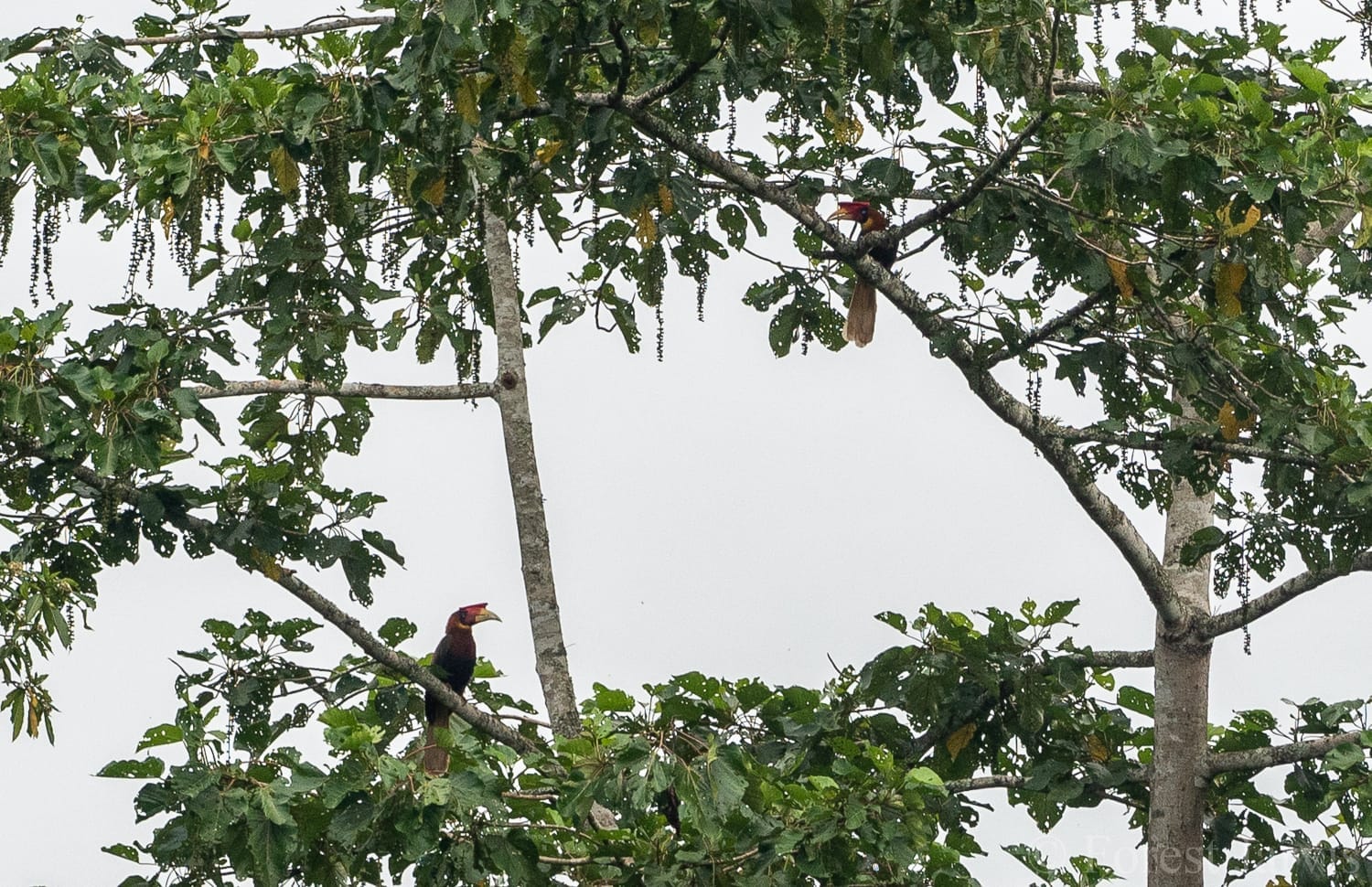Text and photos by Forest Jarvis
I’ve said several times that Region XII (the SOCCSKSARGEN Region) is the best birding region in the Philippines, and I still believe that it’s true. It boasts one of the best marsh and shorebirding spots in the country (Barangay Buayan in General Santos), one of the most important egret breeding colonies (Baras Bird Preserve in Tacurong City), some of the best high-altitude forest birding sites (EDC Geothermal Plant at Mount Apo, Lake Holon, and Mount Matutum), and, only recently being discovered, one of the last remaining primary lowland forests in Mindanao, at Senator Ninoy Aquino in Sultan Kudarat province. It even has its own endemic bird- the T’Boli Sunbird, found only in the mountains of South Cotabato and Sarangani provinces.
Thankfully, others have been cottoning on to the vast trove of avian riches in Region XII, including the Wild Bird Club of the Philippines, which made the very wise decision to host its 12th Philippine Bird Festival in Tacurong City, home of the world-class Baras Bird Preserve. Obviously I was excited just to visit the bird festival, but even better, I was asked to be one of the leaders of the post-festival tours for Bird Festival participants. Joining me leading the tour was fellow resident Pete Simpson, who’s the real professional guide (and a far better birder), as well as Yepyep Pamplona, one of the many birders in Tacurong City. We set up a whirlwind 4-day birding tour of Region XII, with a 2-night climb up Lake Holon (my favorite place in Mindanao) followed by a day in the new birding site of Senator Ninoy Aquino. It was a tight schedule, but it gave us the chance to see some very, very good birds seen in very few other places.
Pete and I departed for the conference early in the morning on Friday, May 11 to be able to attend the afternoon activities in Tacurong. Of course, you can’t put two birders in a car together and expect them not to stop at least a few times to look at birds on the way. Our first stop in Region XII was at a small lake in Barangay Tinagacan, just outside of General Santos, which is the only currently-known site for Pheasant-tailed Jacana in Mindanao. I’d seen them before, but Pete hadn’t, so we made a brief stop there for Pete to get one of his few remaining Mindanao lifers. It took a while standing in the hot sun scanning through a spotting scope, but we were finally able to spot one a fair distance away- too far away for pictures, but good enough to count.
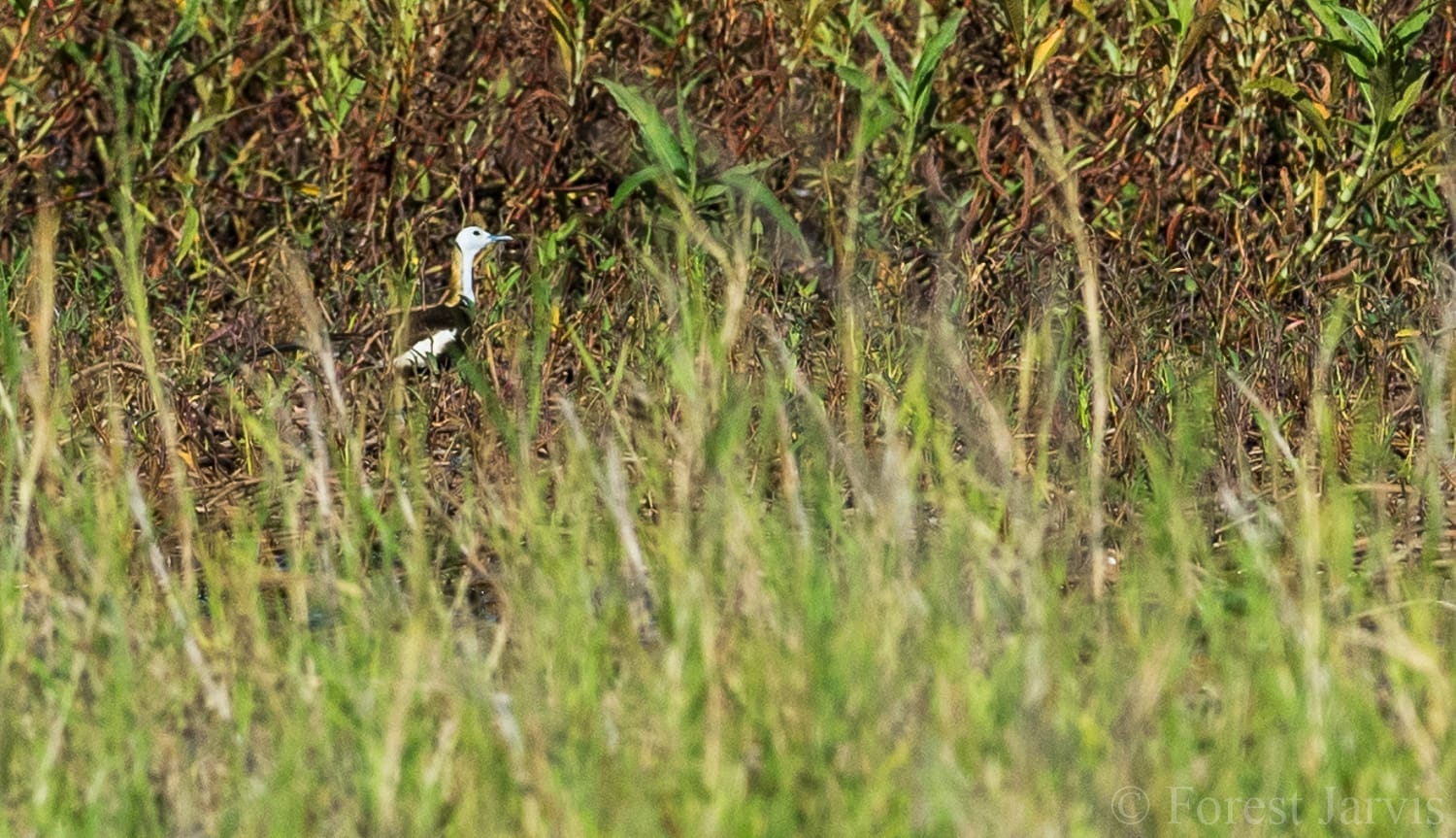
Another cool sighting on our way back to the car was a Common Southeast Asian Treefrog impaled on a branch by a Long-tailed Shrike. There was actually a pair of shrikes by the frog carcass, with one eating and the other displaying and flicking its wings. Male shrikes are known to present large prey to females as a form of courtship (in typically gruesome shrike fashion), which is what I suspect was going on there.
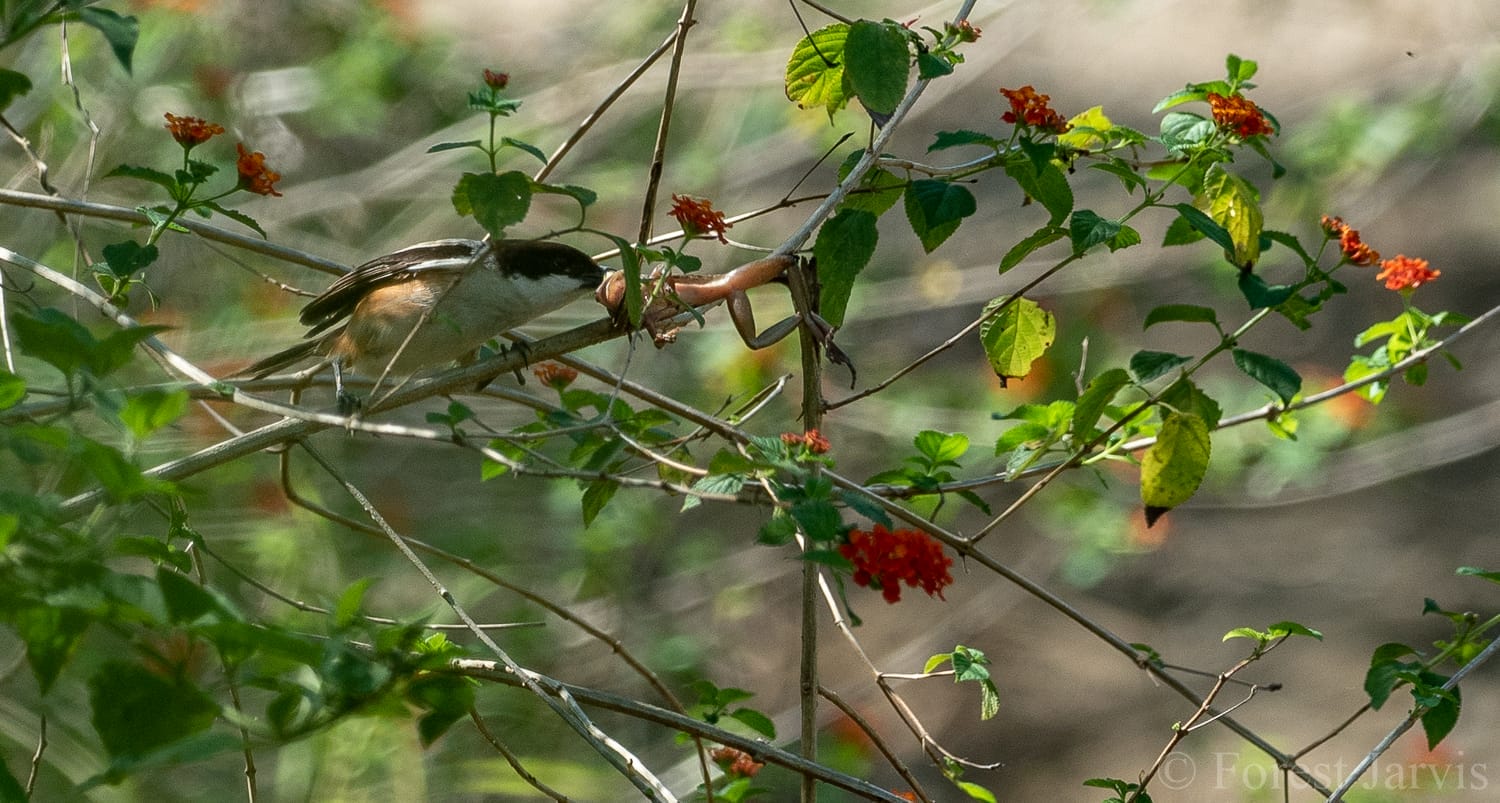
We also stopped by the mudflats of Barangay Buayan in GenSan proper to check for any late-staying migrants, but saw little interesting besides a young-looking Osprey, a Peregrine Falcon of the migratory race, and a couple of unusual-looking Little Egrets with all-yellow bills. We arrived in Tacurong with just enough time for an excellent lunch, before continuing on to the day’s various activities. I’ll leave the description of the bird fair itself up to club members who were more involved than I, but suffice it to say that I was very impressed with the WBCP execom and the LGU staff of Tacurong City (particularly Emelie Jamorabon) for organizing an excellent, tightly-run bird fair. I only wish I could have seen even more of it.
The second day of the bird tour started with an excursion outside of Tacurong, to Lake Sebu where the delegates were treated to a quick jaunt birding along the Seven Falls Trail, followed by a cultural presentation in a T’boli longhouse. We arrived at the Seven Falls just before sunrise, and started on a bridge over a river near one of the waterfalls, hoping to see one of the resident Southern Silvery Kingfishers. I told the delegates to look out for a small black and white kingfisher, and sure enough, after a bit of waiting a Southern Silvery Kingfisher darted in, flitting from rock to rock and giving us all great views.
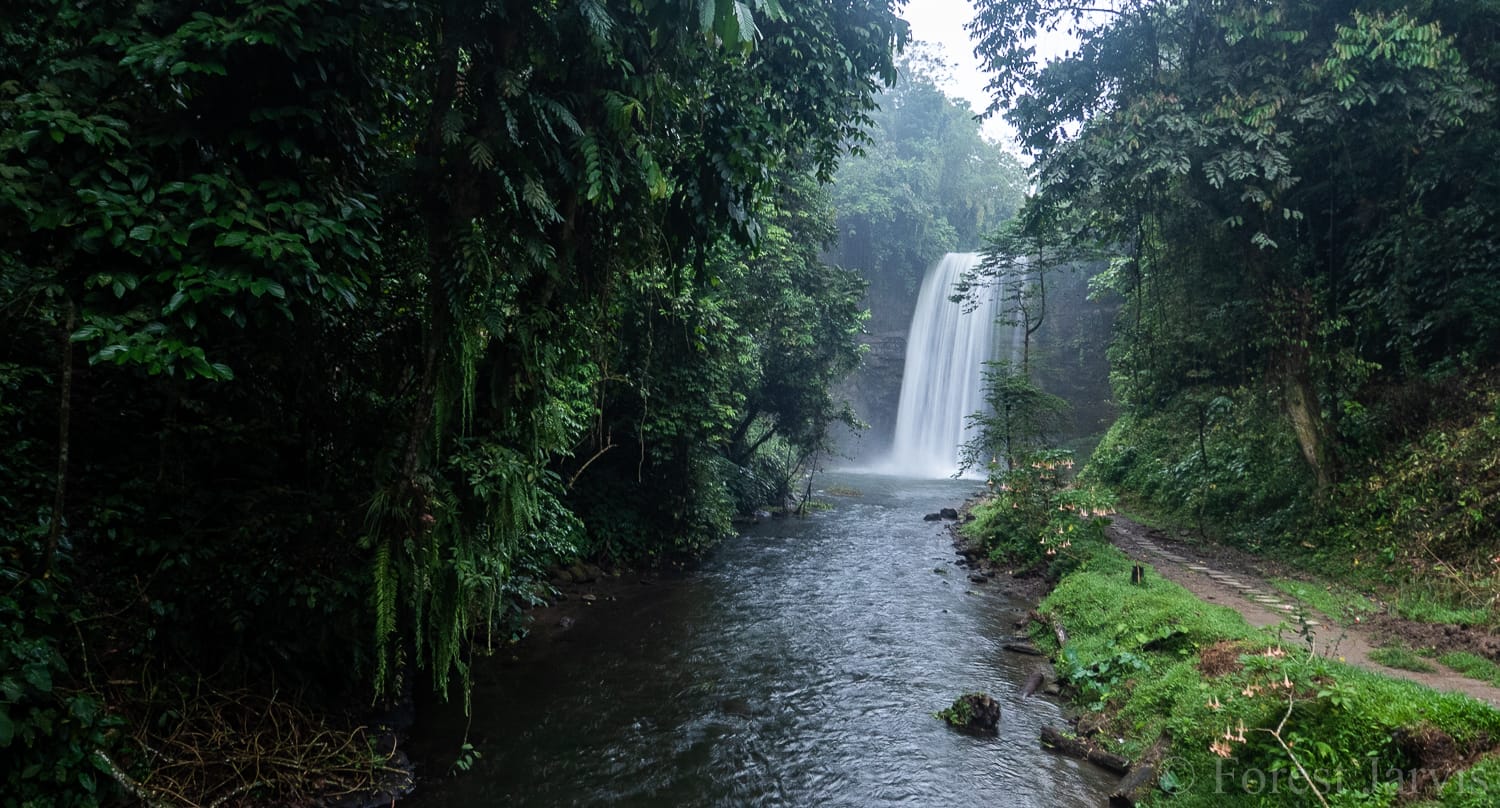

Once the Silvery Kingfisher had moved on, we started on the real trail. Ordinarily I wouldn’t spend much time on birds like Philippine Bulbul, Red-keeled Flowerpecker, or White-eared Brown Dove, but this was the first time birding in the Philippines for most of our delegates, so these “trash birds” were exciting nonetheless! There were more exciting birds to be had as well, however- a flock of Brown Tit-babblers called from the bushes, we had brief but good views of the much-sought-after White-eared Tailorbird, a West Mindanao endemic, and the group I was with had a close encounter with a male Mindanao Hornbill!
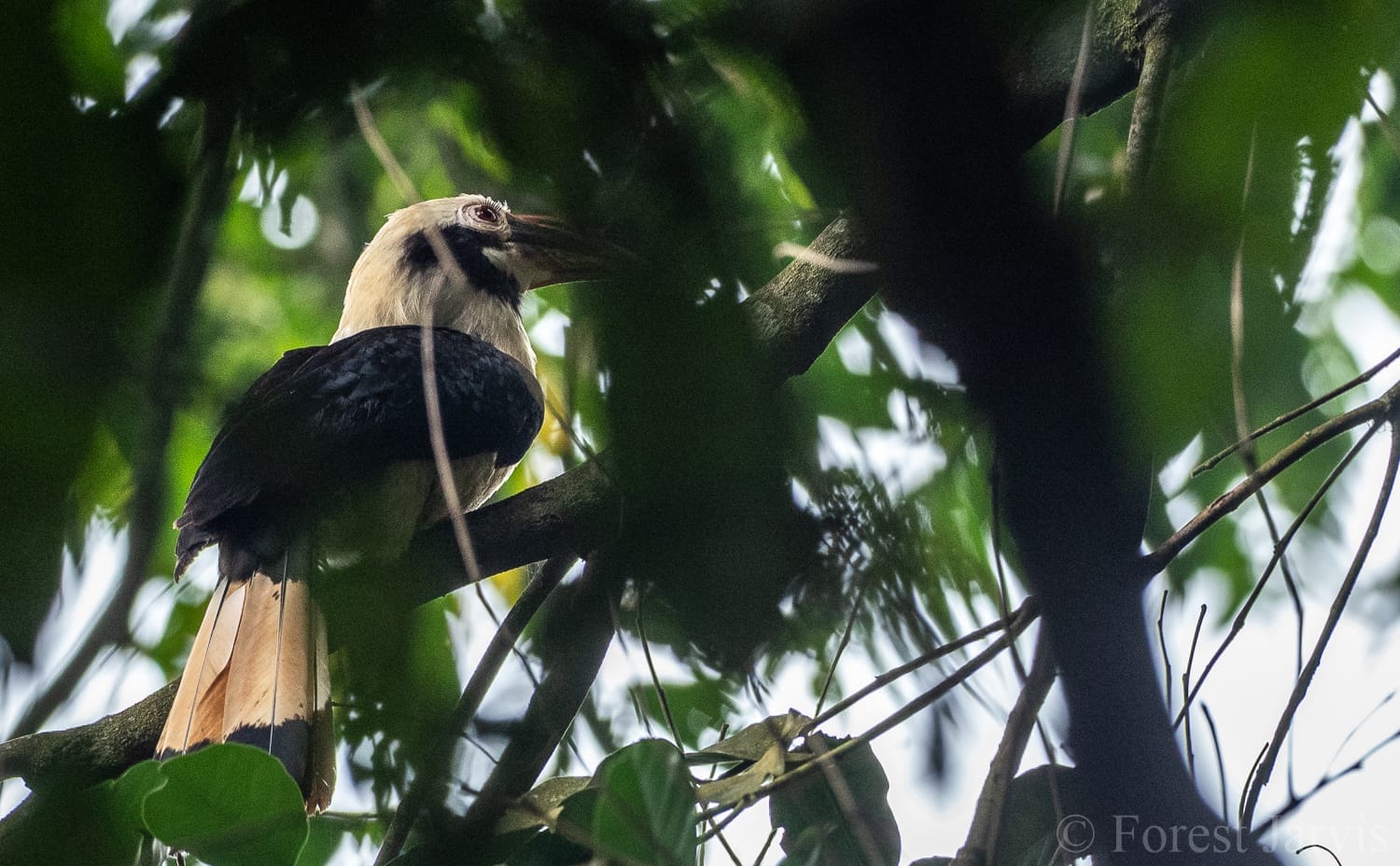
Later that morning, we had a traditional (and delicious!) breakfast in a T’boli longhouse, along with a cultural presentation including music, dances, and one of the tribal elders speaking to us about the T’boli beliefs about various local birds.
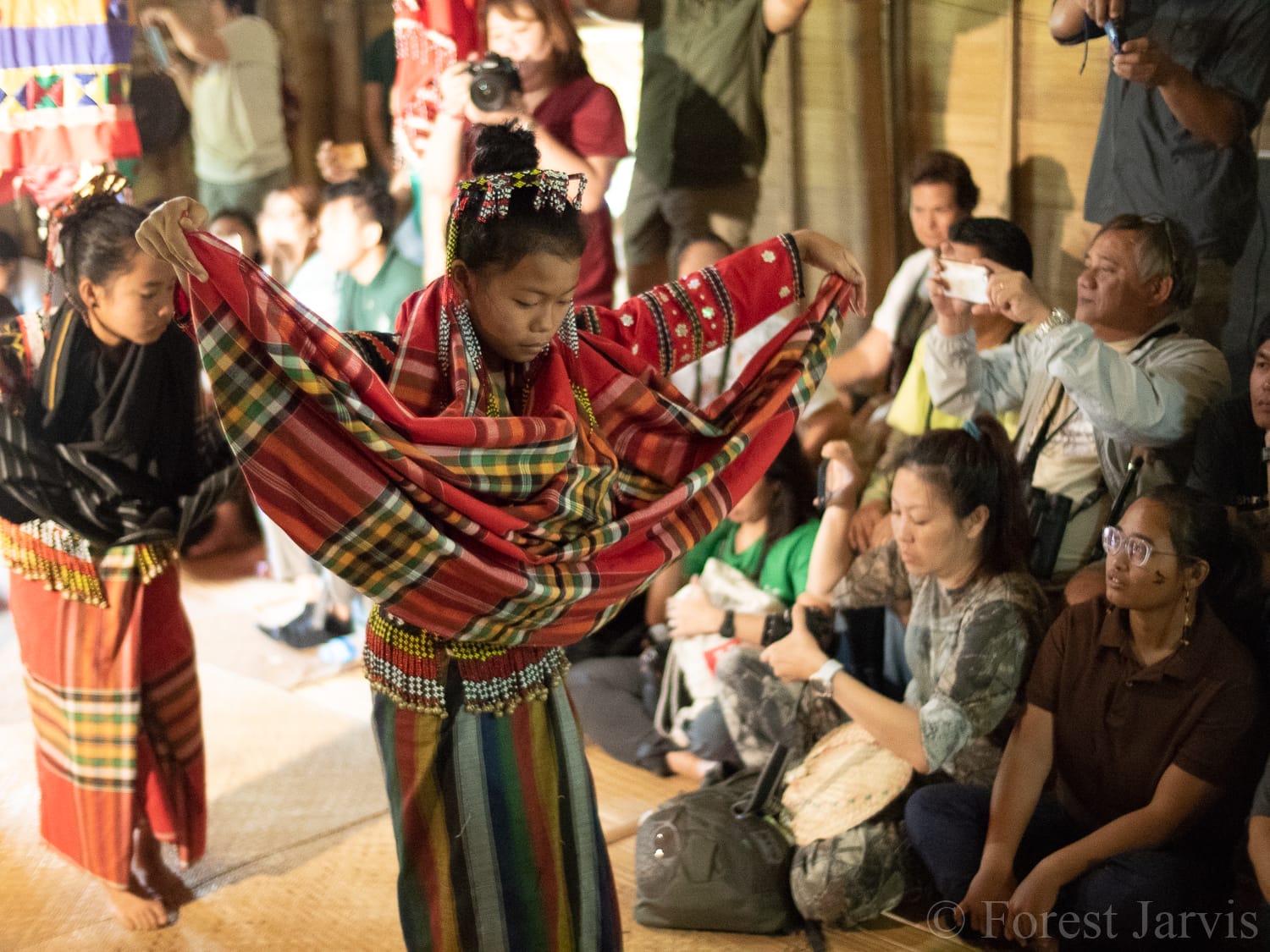
After driving back to Tacurong and taking a much-needed nap, we joined for the afternoon and evening activities, including an excellent dinner in the Tacurong City gymnasium. At the same place we got a chance to officially meet our tour participants- a diverse group from Nepal, Thailand, Taiwan, Cambodia, and Ireland- and give them a quick briefing on the birding trip to come.
The next morning was another very, very early one as we left Tacurong around 3:30 in the morning and headed to the T’boli municipal hall, the jump-off point for Lake Holon. After arranging food and equipment rentals, we transferred to 4×4 vehicles provided by the municipality for the long drive to the trailhead. Getting to the trailhead means 2 hours of driving on very, very rough dirt roads through small villages and banana plantations. Previously getting to Sitio Kule, the start of the Kule Trail, required a somewhat terrifying ride on the back of a motorcycle, but in recent months they’ve made a new road that’s accessible with a tough 4×4 vehicle. That makes it at least slightly more comfortable, though it’s still a lot of time being jostled around in the back of a car.
As it turned out, Sitio Kule still isn’t 100% vehicle accessible- our truck had to stop near the end of the road as the load of passengers was too heavy to make it up a steep hill. Since we were so close to the village, we decided to just get out and walk, which was fine since it was through a decent patch of forest and we were able to start our birding a bit early. We saw a Turquoise Flycatcher in the top of a tree nearly as soon as we got down from the truck, followed by a beautiful male Metallic-winged Sunbird, near the very top of its altitudinal range. We also had a mixed flock of Buzzing Flowerpeckers and Rufous-headed Tailorbird, and best of all a quick flyover from a Mindanao Lorikeet, our #1 target for the site!
After a bit of walking, we reached Sitio Kule, a small T’boli village at the foot of Mount Melibengoy. Previously accessible only by motorbike, Kule has only been open to outside visitors for a couple of years, before which conflicts in the area meant that Mount Melibengoy and Lake Holon were almost permanently closed for hikers. The influx of tourism from the open of the lake has been a huge boon for the local economy, as villagers now act as guides, porters and cooks for hiking expeditions. However, the majority of the population remains employed in farming. Only the younger generations speak Tagalog, while many of the older people in the area speak only T’boli. T’boli isn’t closely related to Tagalog, Cebuano, or any of the other widely-spoken Philippine languages, though it’s closer to Blaan, Manobo, Meranao, and other languages spoken by Mindanao’s original inhabitants. Unusually for the Philippines, it makes heavy use of the “F” sound, which many Filipinos struggle to pronounce at all.
We stopped for a bit in Kule to arrange our bags to give to the porters and drink some excellent native coffee, then starting hiking on the actual Kule Trail. The hike started through farmland on the deforested lower slopes of Mount Melibengoy, where we heard Tawny Grassbird and Striated Grassbird and had good looks at the Ridgetop Swiftlets and Philippine Swiftlets flying overhead. A huge Purple Needletail also flew by quickly, the first I’ve seen at the site. We had excellent views of a Colasisi perched on the top of a palm frond, though I was too busy pointing it out to our tour participants to get a photo. Once we reached the forest edge, the mixed flocks started almost immediately; we had wave after wave of Turquoise Flycatchers, Yellow-bellied Whistlers, Cinnamon Ibon, Buzzing Flowerpeckers, Olive-capped Flowerpeckers, and Negros Leaf Warblers passing by us, though usually too high and backlit for good photos. A Bundok Flycatcher was seen in the underbrush, while we also heard White-browed Shortwing and Red-eared Parrotfinch, an excellent first record for the site. Even better, the forest was regularly pierced by the explosive squawks of Mindanao Lorikeets!
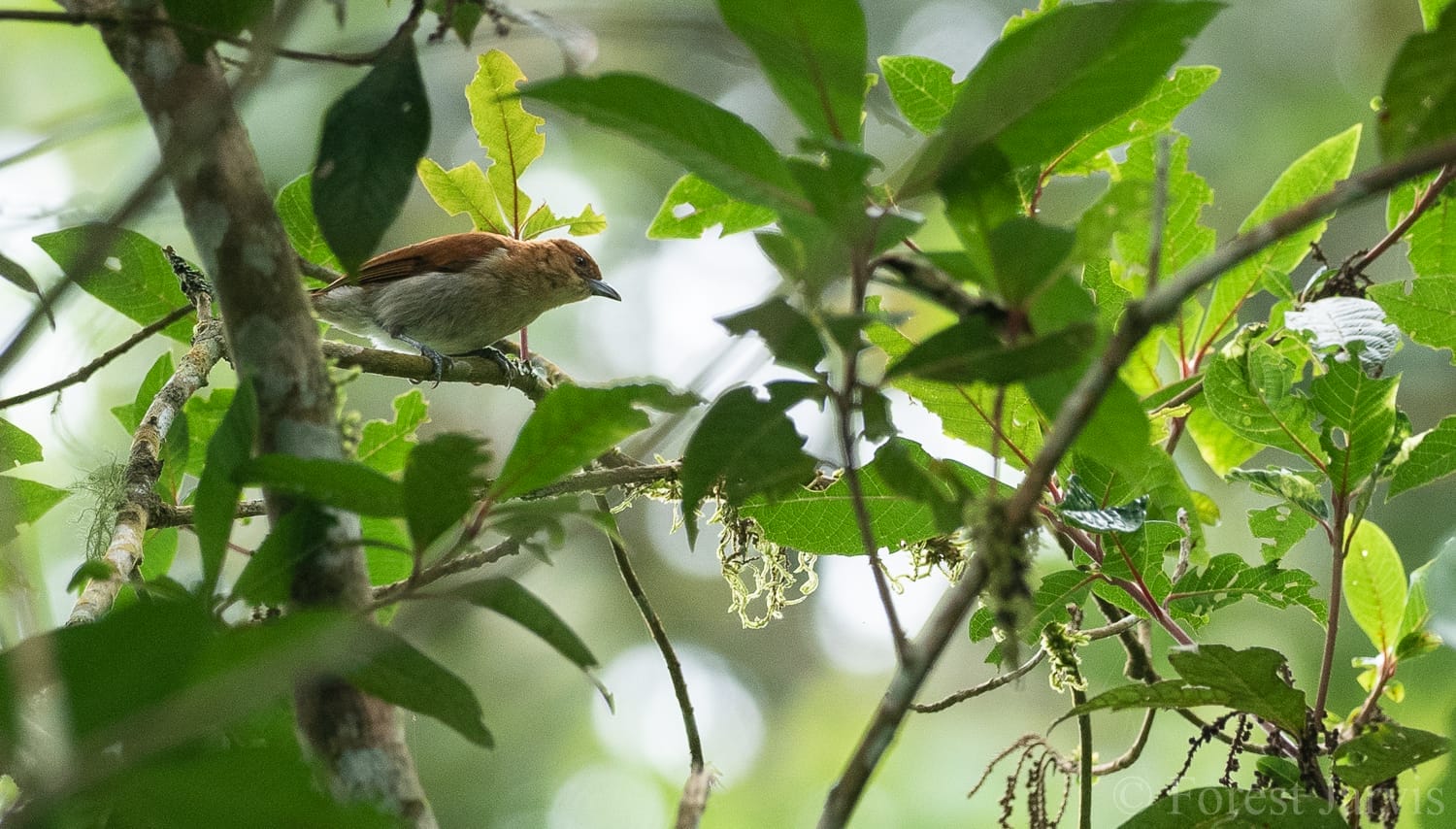
This was the first time birding in the Philippines for most of our participants, so any endemic bird we saw was a good bird. Really though, what we were looking for most were the lorikeets. Mindanao Lorikeets are considered “Vulnerable” by the IUCN, but really that’s an underestimate of the dire situation that they’re in. Supposedly found in most mountains of the Philippines at elevations over 1,000 meters, in fact Mindanao Lorikeets have been decimated over the past decades alone by trapping for the pet trade. Within the past 10 years they’ve most likely been completely extirpated from the well-known birding sites of Mount Talomo, Mount Apo, and Mount Kitanglad, with no reliable sightings there that I know of in the last 5 years. They were previously seen semi-regularly in small numbers at Pete’s birding site in the Compostela Valley, but haven’t been spotted at all this year, perhaps because a trapper managed to find that flock’s roosting area. Considering the drastic decline in population over the past couple of decades, they at least merit a listing as Endangered, perhaps even Critically Endangered. Very, very few people have seen them recently, and before this trip only 7 people I know of had ever photographed them in the wild- four of whom (myself included) photographed them during my last visit to Lake Holon.
Miraculously, they’re still found in healthy numbers on Lake Holon, the only safe and accessible site that I know of for them. The locals tell me that they haven’t hunted or trapped them in years, and trapping is likely also discouraged by the strict entry requirements for the mountain. Hikers (or birders) must pre-book a climb on the mountain with the T’boli tourism office, and the no-book-no-climb policy is strictly enforced. The T’boli municipality and tourism office deserve lots of kudos for the excellent job they’ve done in preserving the environment around Lake Holon, and hopefully the enforcement of environmental laws and sustainable tourism policies will continue.
We stopped at a small stream and hot spring for an excellent lunch of rice, adobo and pancit, prepared boodle-fight style on banana leaves and eaten with our hands. After lunch was a steeper section, following switchbacks up the edge of the ravine, and then another flat bit. When I reached the top of the switchbacks, I found lots of people stopped staring at a fruiting bangkal tree- it turned out that they had seen a feeding Mindanao Lorikeet! It wasn’t there at first, but with a bit of waiting, a pair finally returned, and we all had beautiful scope views of them perched and preening, the rarest of sights!
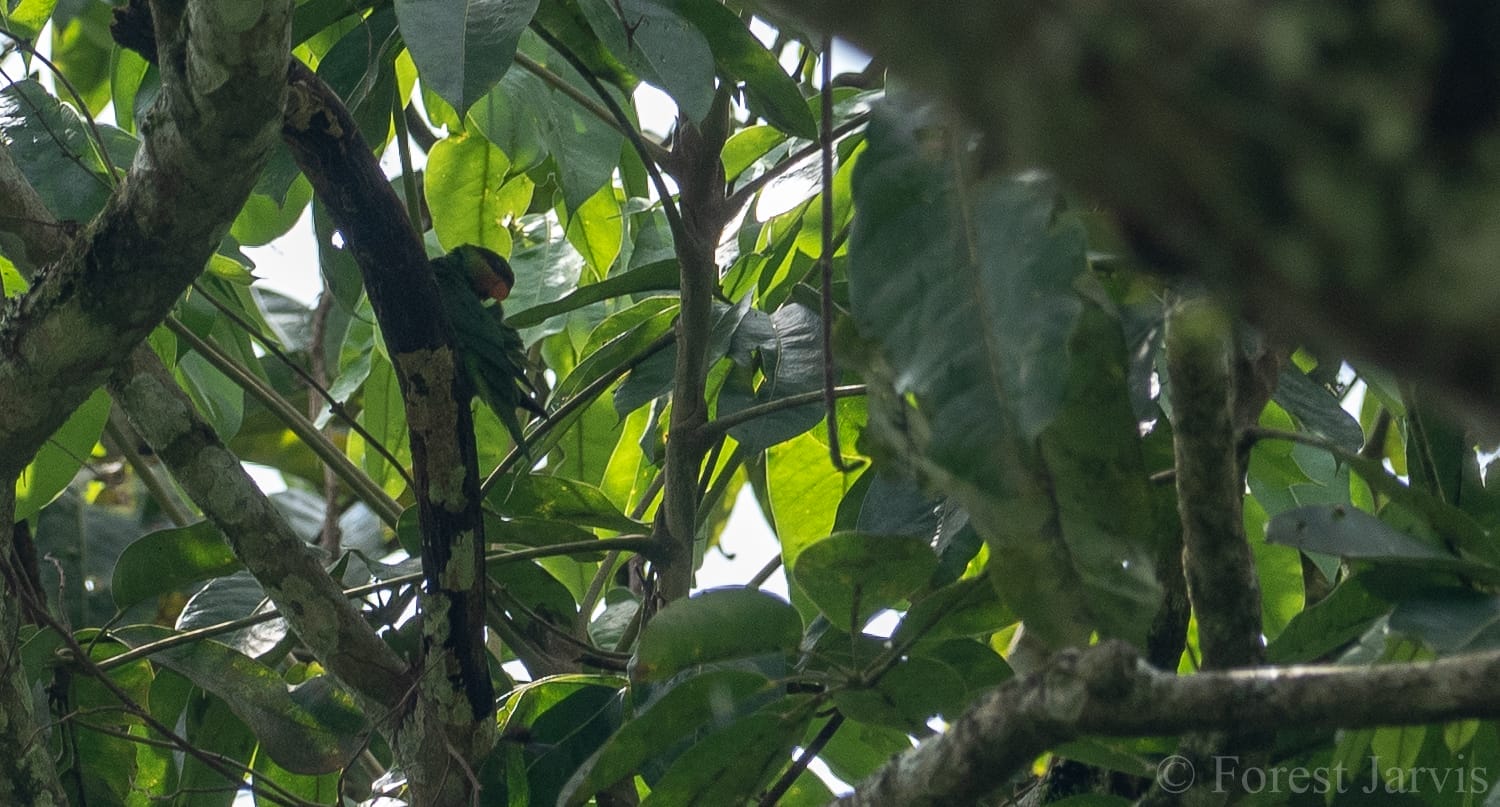
A bit further up, we encountered another mixed flock, this one with lots of Black-and-cinnamon Fantails and a pair of Macgregor’s Cuckooshrikes. The cuckooshrikes are supposedly monotypic and found on most mountains of Mindanao besides Mount Apo, but the birds in Compostela Valley have calls that are quite different from those seen on Mount Kitanglad. The birds in Lake Holon, meanwhile, are noticeably bigger than the ones in Bukidnon and ComVal, and also have their own distinctive call- one of the many unsolved taxonomic mysteries of Western Mindanao.
As we were gathered looking at the cuckooshrikes, I happened to spot a tiny bird fly into a patch of leaves right in front of us. Some closer looks in the binoculars revealed a tiny beak and plumed back- Mindanao Miniature Babbler! These are another rarely-seen bird; the smallest in Mindanao, and known only from three sites, all of which are in Region XII. They’re also extremely difficult to spot almost everywhere, as they prefer to stay high in the canopy mixed in with flocks of other birds. Unfortunately the bird flew off before everyone was able to get on it, and my pictures were horribly backlit and not terribly sharp, but it was still an excellent tick for the day.
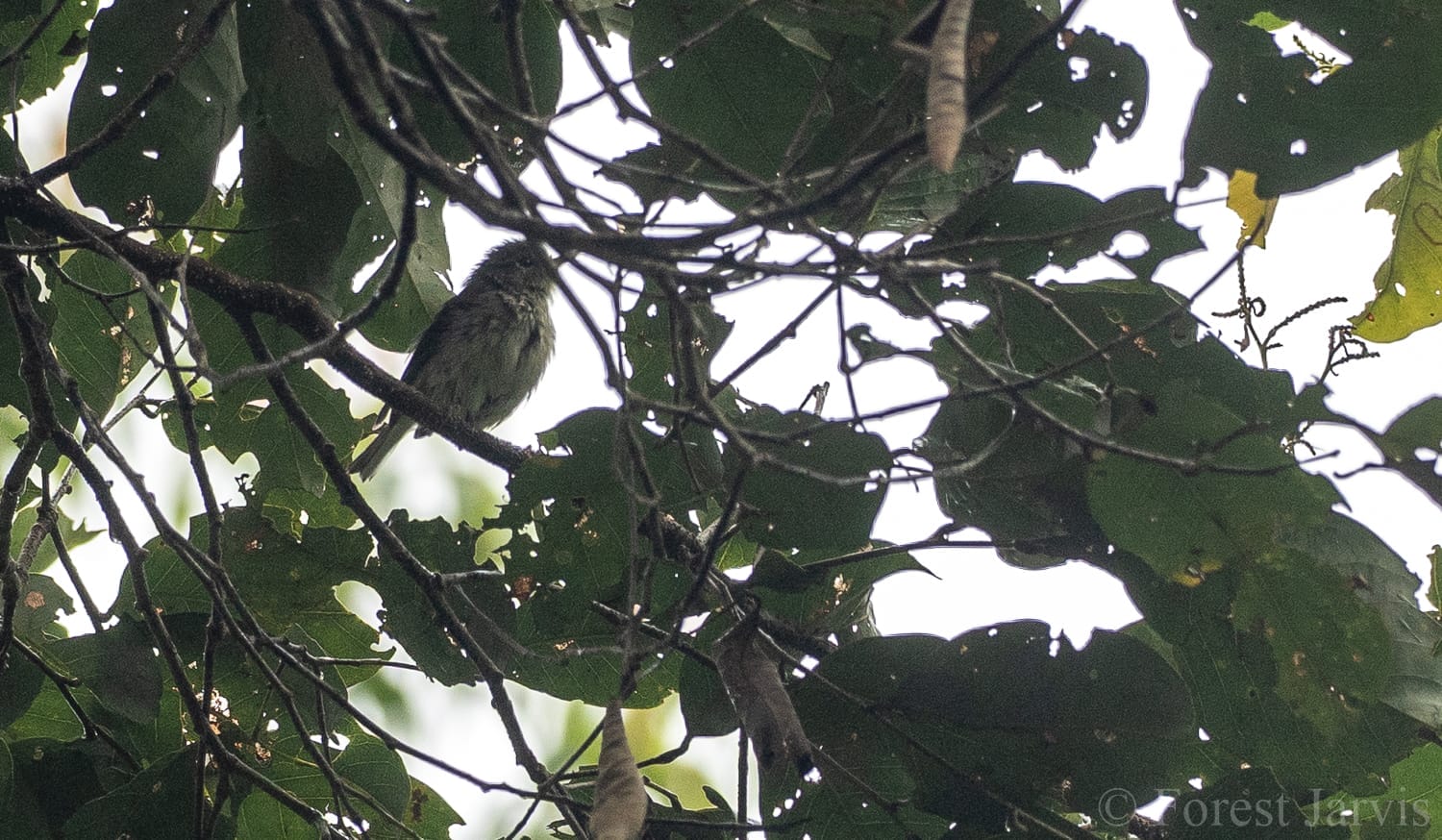
Another steep climb brought us out of the forested area, and, finally, to the crater rim! I’ve heard many stories of hikers making it all the way to the top of Mount Melibengoy, only to have a clouded, rainy view of absolutely nothing. However, I’ve always had good luck- perhaps because they say the guardian spirits of Lake Holon reward people who climb the mountain with good intentions with good weather. This visit was no exception, and we had fantastic panoramic views across Lake Holon and the forest below. Lake Holon is the only sign of Mount Melibengoy’s violent past; it was created in a massive Pinatubo-style eruption around 300 years ago, which Spanish records say turned the sky over all of Mindanao black with volcanic ash. It’s been quiet since then, though it’s being monitored by PHIVOLCS for any sign that it may awake again.
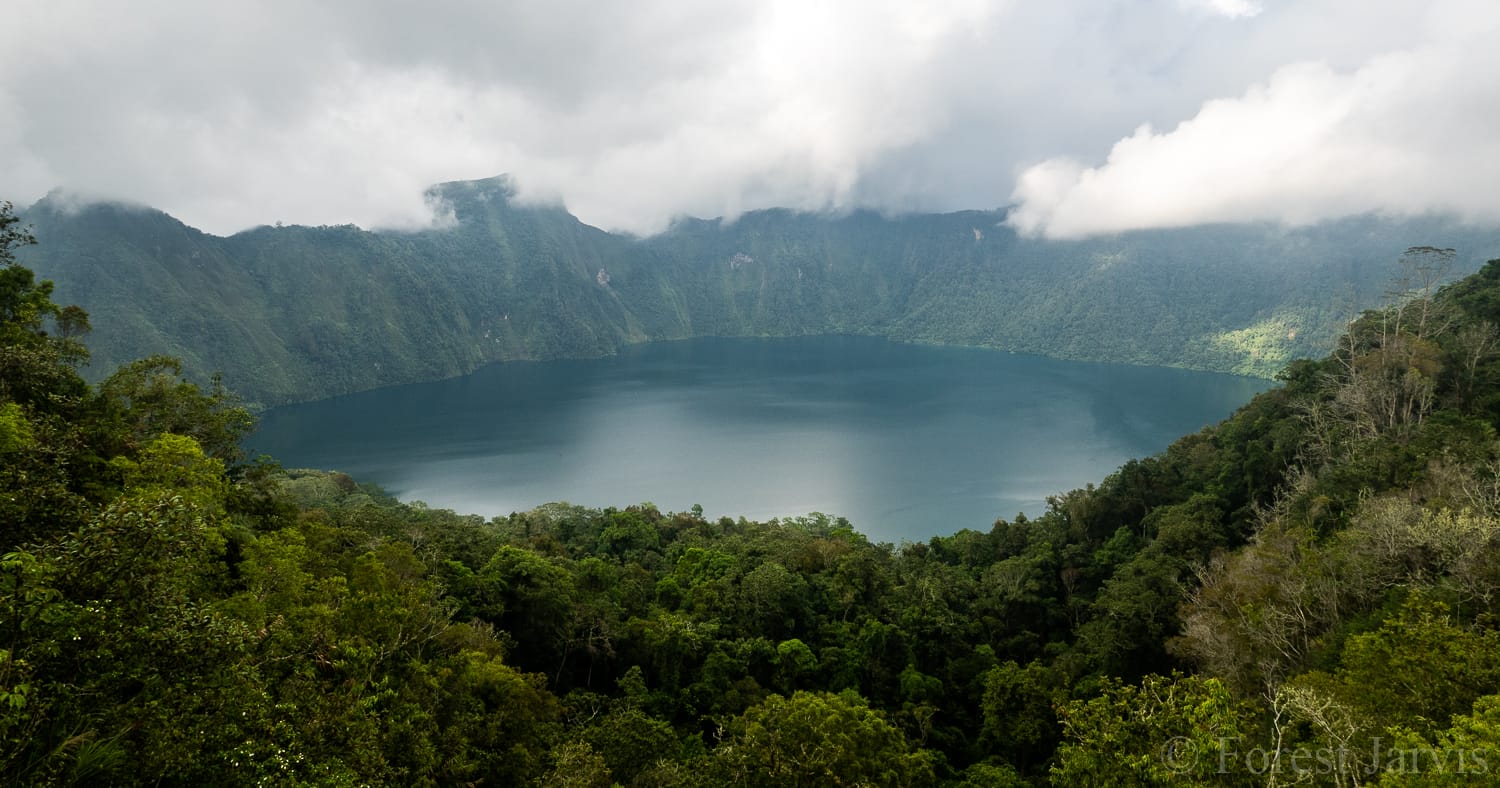
After the overlook, the trail continued along the crater rim for a time, passing through an area of thick shrubbery and dwarf forest. This proved to be excellent birding, with some very good new records- a beautiful male Flame-crowned Flowerpecker, recently split to become a Mindanao endemic, flitted in the trees above us, along with Elegant Tit, Macgregor’s Cuckooshrike, and Cinnamon Ibon. We also spotted a brilliant-looking Island Thrush, only my second time seeing one at Lake Holon. The Island Thrush here are supposedly part of the kelleri subspecies found on all mountains of Mindanao except Mount Kitanglad (which has its own unique form), but this bird looked nothing like any kelleri I’ve seen elsewhere, with a light-grey head clearly contrasting with its dark-brown body. Considering the Island Thrush’s propensity for extreme subspecific (and perhaps species-level) diversity, this could be yet another taxonomic knot in Lake Holon that ought to be sorted out.
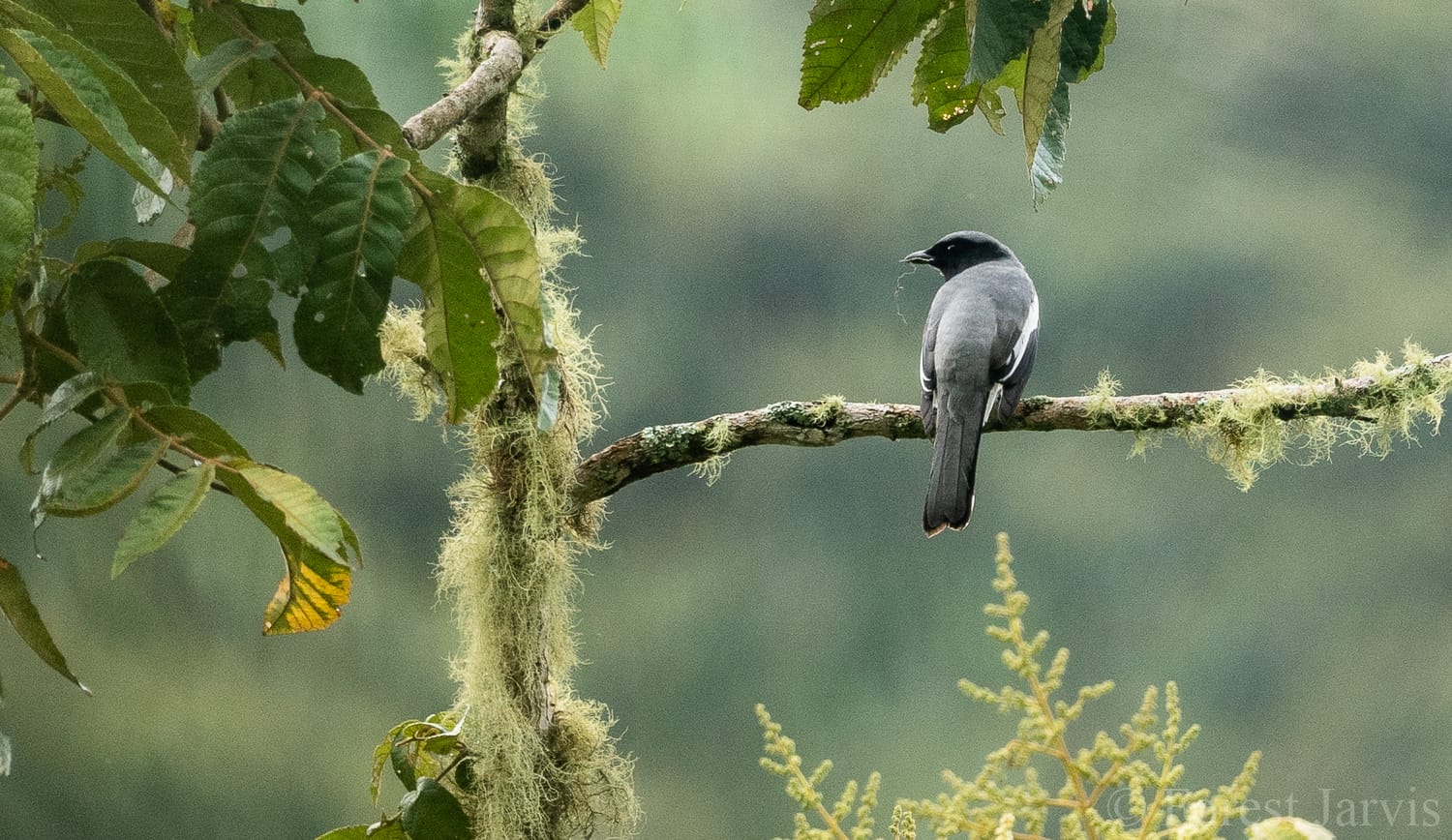
P5132977 (Caption: Macgregor’s Cuckooshrike)

The descent from the crater rim down to the actual lake was quite steep, with barely any time to stop for birding. Getting to the campsite required a quick trip on a bangka, as the edge of the crater by the lakeshore is too steep for a trail. In fact, the lake used to be nearly inaccessible, until a strong earthquake in 1996 sent a huge chunk of land tumbling from the crater down to the lakeshore, creating what is today the campsite area.
P5133055 (Caption: Crossing Lake Holon)
P5133057
It was late afternoon by the time we reached the campsite, and there was time to do little else but set up camp and enjoy the sunset over the lake. The next day had been declared a holiday at the last minute, so the campsite was busier than it usually would be on a Sunday night. In general that was fine, but it did make owling difficult- indeed, we heard little but a very distance Giant Scops Owl that showed little interest in our tape. Owling the next morning was similarly fruitless, with a calling Everett’s Scops Owl remaining far out of view. Sunrise over the lake was stunning as always however, despite some inconveniently-placed clouds.

After an early breakfast, we began walking very, very slowly up the Salacafe trail to see what other Mindanao endemics we could catch a glimpse of. After some limited playback, we were able to coax a male White-browed Shortwing out in the open for a short while, enjoying its loud, beautiful song. A Black-and-cinnamon Fantail was seen sitting on its nest, as well as many others flitting around in mixed flocks, joined by Sulphur-billed Nuthatches, Yellow-bellied Whistlers, Rufous-headed Tailorbirds and Negros Leaf-warblers. Negros Leaf Warblers are yet another of Lake Holon’s taxonomic puzzles; for one thing, they’re all pale grey, rather than the yellowish tinge I’m used to seeing around Davao. For another, there are two distinct forms- one with a clear eyebrow, and one with a massive zosterops-like eyering, the likes of which I’ve never seen on another phylloscopus in the Philippines. The song is generally the same, though based on our limited observation the eyeringed birds have a separate song that sounds like an Elegant Tit. Really what I’m hinting at throughout this post is that someone with the proper degree needs to get up to Lake Holon to do some mist-netting.

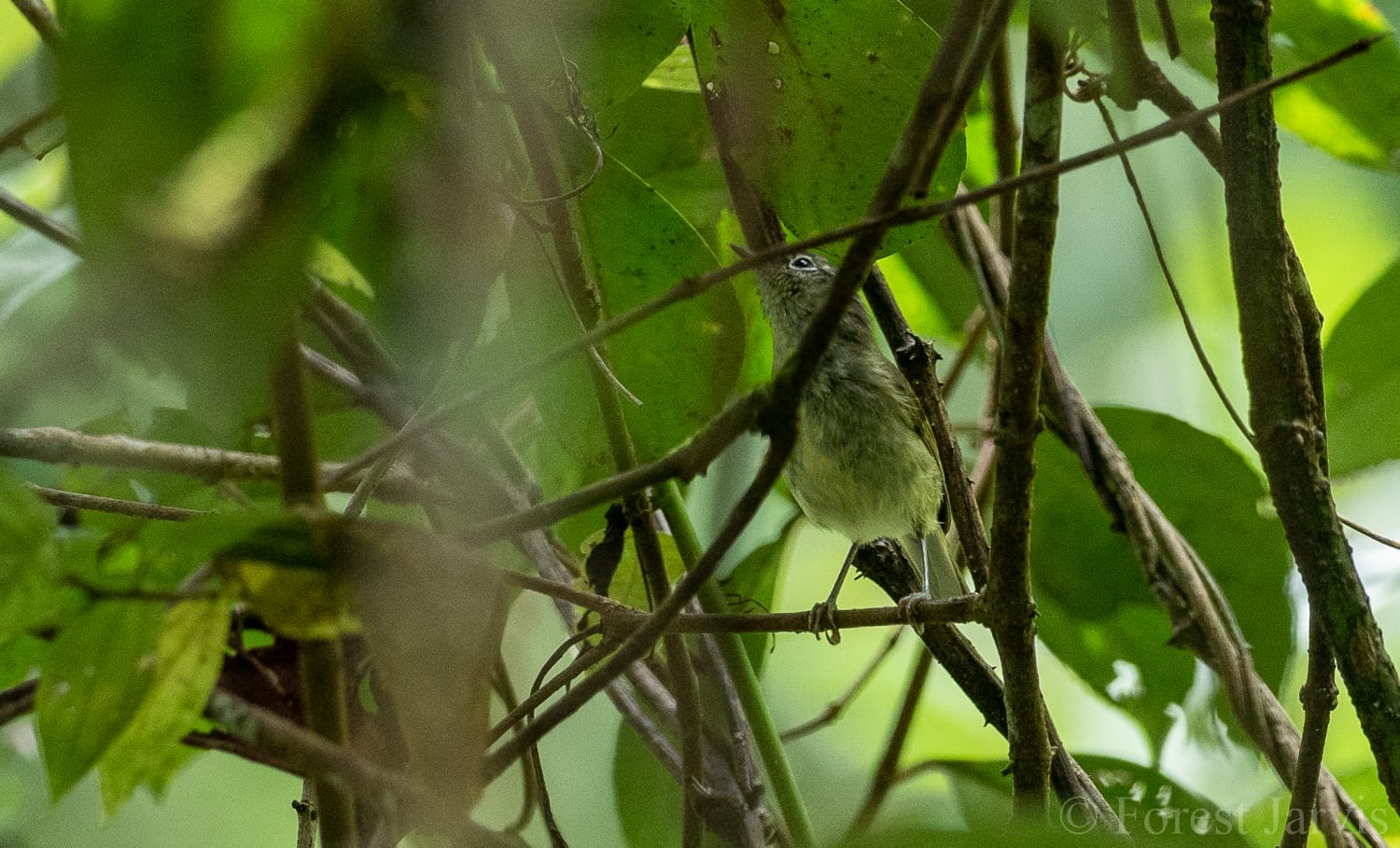

We paused on our way up for an extended rest in a small clearing, just wide enough for us all to gather and look at the mixed flocks above us. We had excellent views of a few female T’boli Sunbirds, recorded only from the mountains of south-central Mindanao, and a major specialty of Lake Holon. Even better were the knock-out views we had of a pair of Mindanao Lorikeets perched just meters in front of us! The best view most people have of these is as small green bullets flying in the canopy above, so to have perched views two days in a row was an absolute mega.
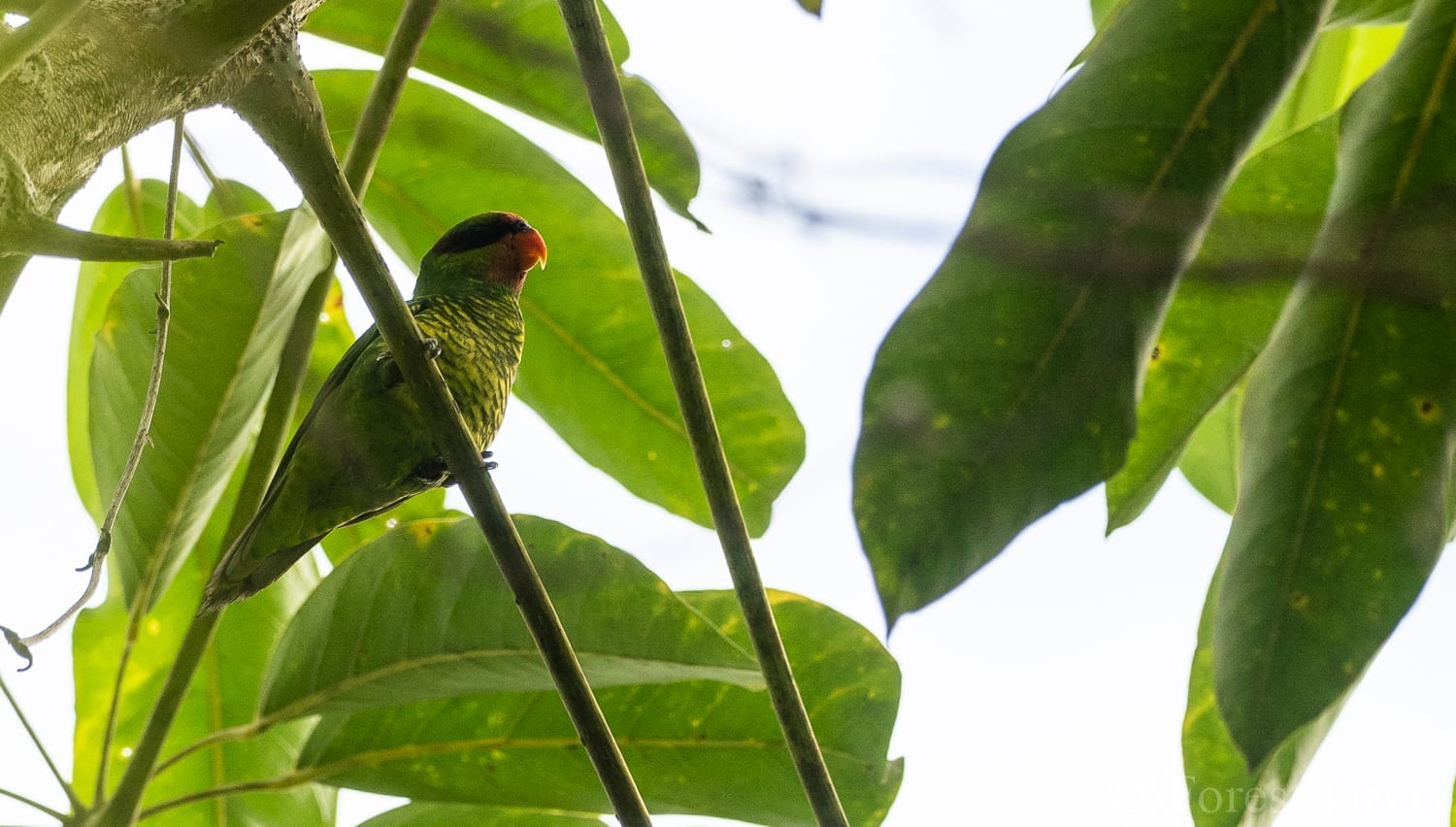
Flush with success after our walkaway views at an incredible rare bird, some of decided to stay around at the clearing for a bit of a rest, while others continued uphill a bit further to a clearing that can be excellent for sunbirds, flowerpeckers and raptors. Sure enough, at the clearing we had more great views of a female T’boli Sunbird sitting and preening herself. On the way back down, we happened upon another fruiting tree, which held feeding Coleto, Philippine Cuckoo-dove, Stripe-breasted Rhabdornis, and, amazingly, even more perched Mindanao Lorikeets.

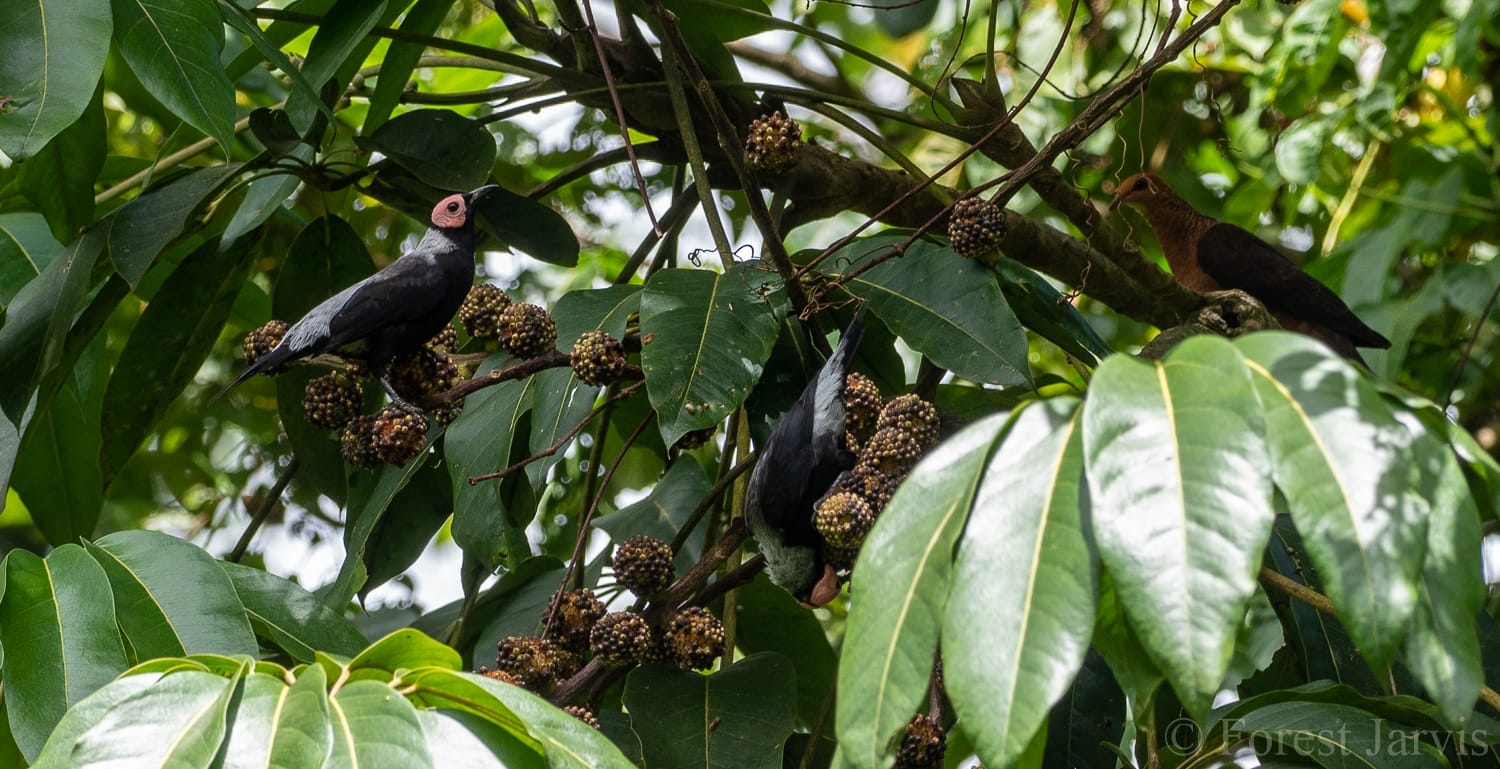
It was an extremely successful morning- so successful, in fact, that we were almost out of birds to look for by around lunchtime. I laid down on the grass of the campsite for an excellent afternoon nap, as well as excellent views of a flock of Scarlet Minivets of the all-yellow nigroluteus subspecies found only in South-central Mindanao.
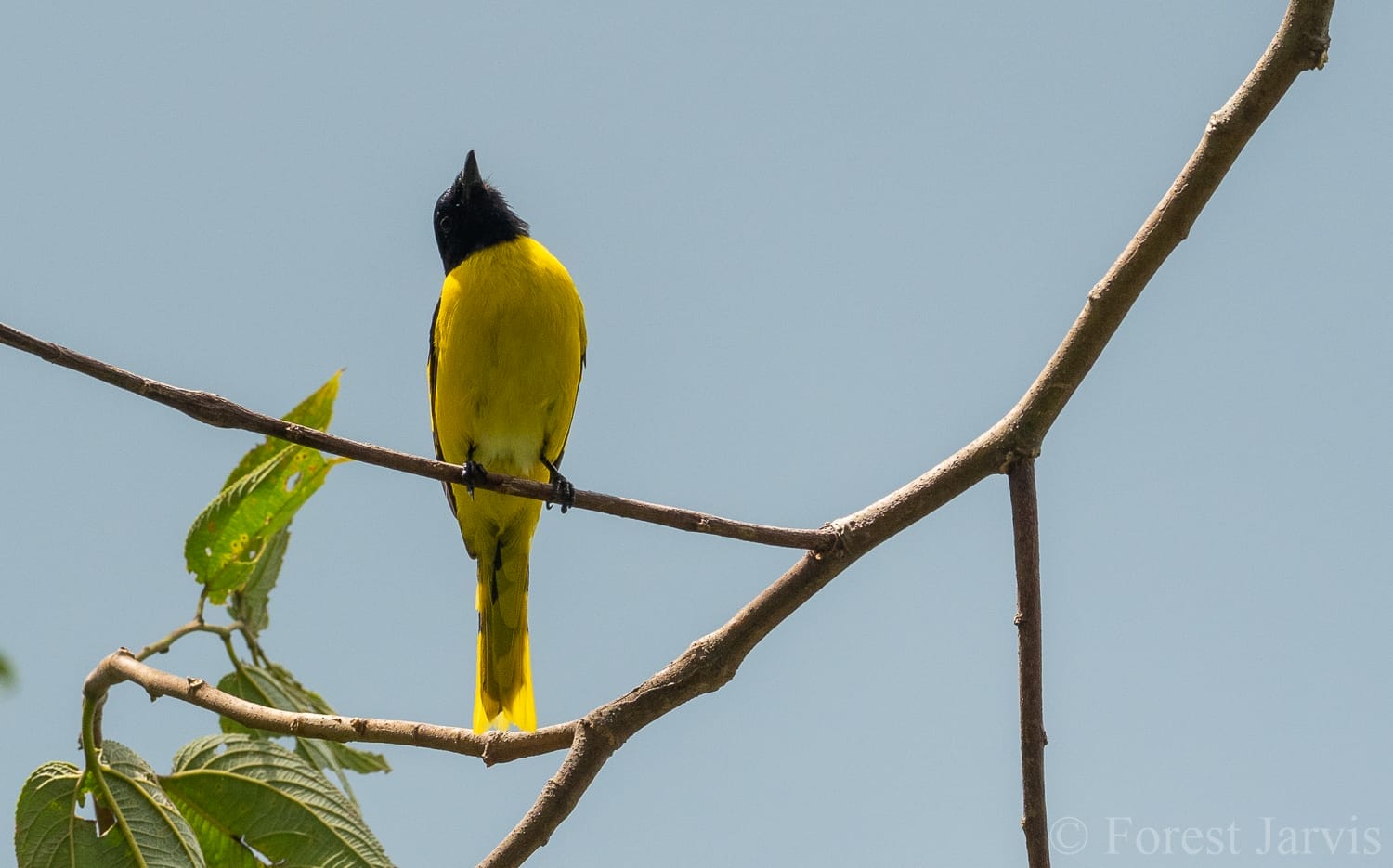
In the late afternoon a smaller group of us went back up the trail for another bit of birding and a final try at owling. We were able to coax a Bagobo Babbler and Long-tailed Bush Warbler quite close to us, though neither of them showed themselves in the open. Once it fell dark we tried owling once more and, amazingly, were rewarded with an Everett’s Scops Owl sitting quietly in the undergrowth just a few meters in front of us! Certainly the best views I’ve ever had of this common but shy endemic bird.
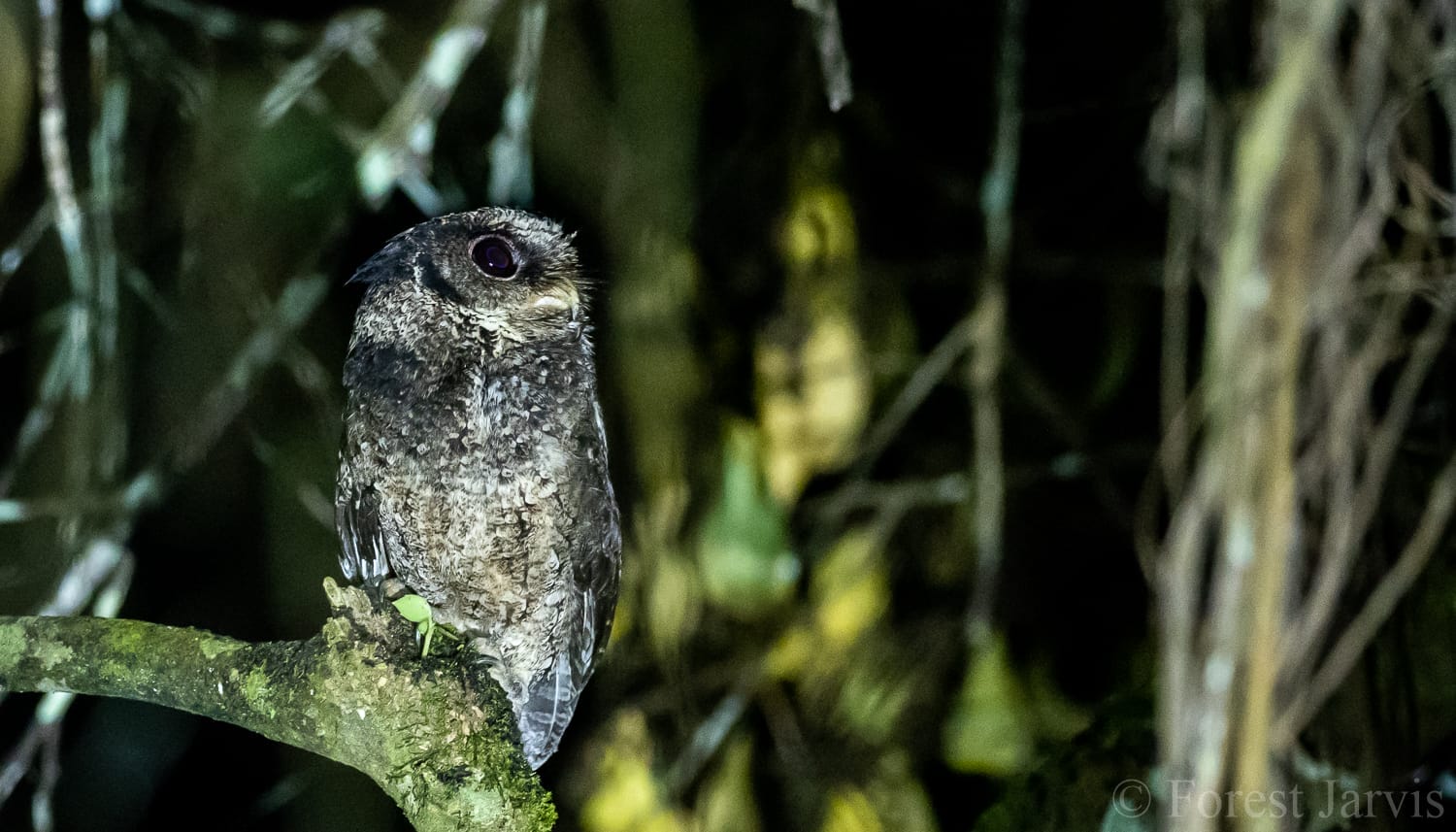
The next morning was our last in Lake Holon, and we didn’t have too much time to delay as some of our delegates had to be in the airport by that afternoon. Still, we had time to enjoy the sunrise, and watch an immature White-bellied Sea Eagle (very far from the sea) being mobbed by Large-billed Crows.

On our final descent from the mountain, birding was a bit hurried as we had lunch to eat and planes to catch. Still, we had time to stop and call in a very responsive Striated Wren-babbler, as well as enjoy some new birds in the form of Citrine Canary-flycatcher and Flame-crowned Flowerpecker. An even better find near the bottom of the trail was a calling Whiskered Flowerpecker! We didn’t have time to try and find it properly, but even the fact they’re in the area is very, very good as so far as I know there are only three or four other known sites for this highly localized Mindanao endemic.

Lunch was the typical excellent fare we’d come to expect: traditional cuisine in a T’boli longhouse, hosted by the T’boli royal family themselves. We also got the chance to meet with Margaux, the Senior Tourism Officer of the municipality, who’s been behind developing community-based tourism in T’boli along with the LGU and the local tribe. They’ve really done a fantastic job of all of it, and I have a massive amount respect for all of them for the good work they’ve done so far- hopefully it can be a model of sustainable, community-conscious tourism that the rest of the country can emulate.
Alas, after lunch it was time to bid most of the delegates farewell as they headed to General Santos, and then Manila and their respective countries. A few of us, however, got into a different van and headed back north towards Tacurong City, then west into the seldom-traveled mountains of western Sultan Kudarat. It was a long, winding road through limestone mountains, on a road that seemed to collapse regularly, perhaps due to being built on soft, porous limestone- not the proper material for road building.
Once we reached Senator Ninoy Aquino town, the mayor picked us up from our hotel and treated us to dinner at his house. The food was delicious, and symbolic of the diverse cultural heritage of SNA and Mindanao in general; fern salad (known locally as “fako-fako), a delicacy of the local Manobo tribes, and inasal-style native chicken, a favorite of the Ilonggo people who settled this area in the last century. Mayor Ecija of SNA has his hands full managing a new, quickly-developing municipality; electricity only recently started running 24 hours a day, and a new road is being built to connect it with the western coast of Sultan Kudarat. Still, he’s remarkably active and involved in his community, and has been quite attentive to the concerns of newly-arrived birders and conservationists, even recently passing a municipal ordinance banning the trapping and hunting of wild animals, which we hope will be strictly enforced.
We woke up bright and early the next morning to head to the birding site in Barangay Kuden- my first time getting there early enough for owling. It was a long and bumpy 4×4 ride as always, but this time we got there with enough of the night left for some proper owling. Giant Scops Owls were calling from the tall trees but never showed themselves to us, but we had more luck with a young Everett’s Scops Owl, which circled around us for nearly 10 minutes, giving all of us excellent views- a relief for those who hadn’t been along for the owl sighting in Lake Holon. Just before sunrise we heard Mindanao Hawk-owl calling from above us, another very good record for the site.
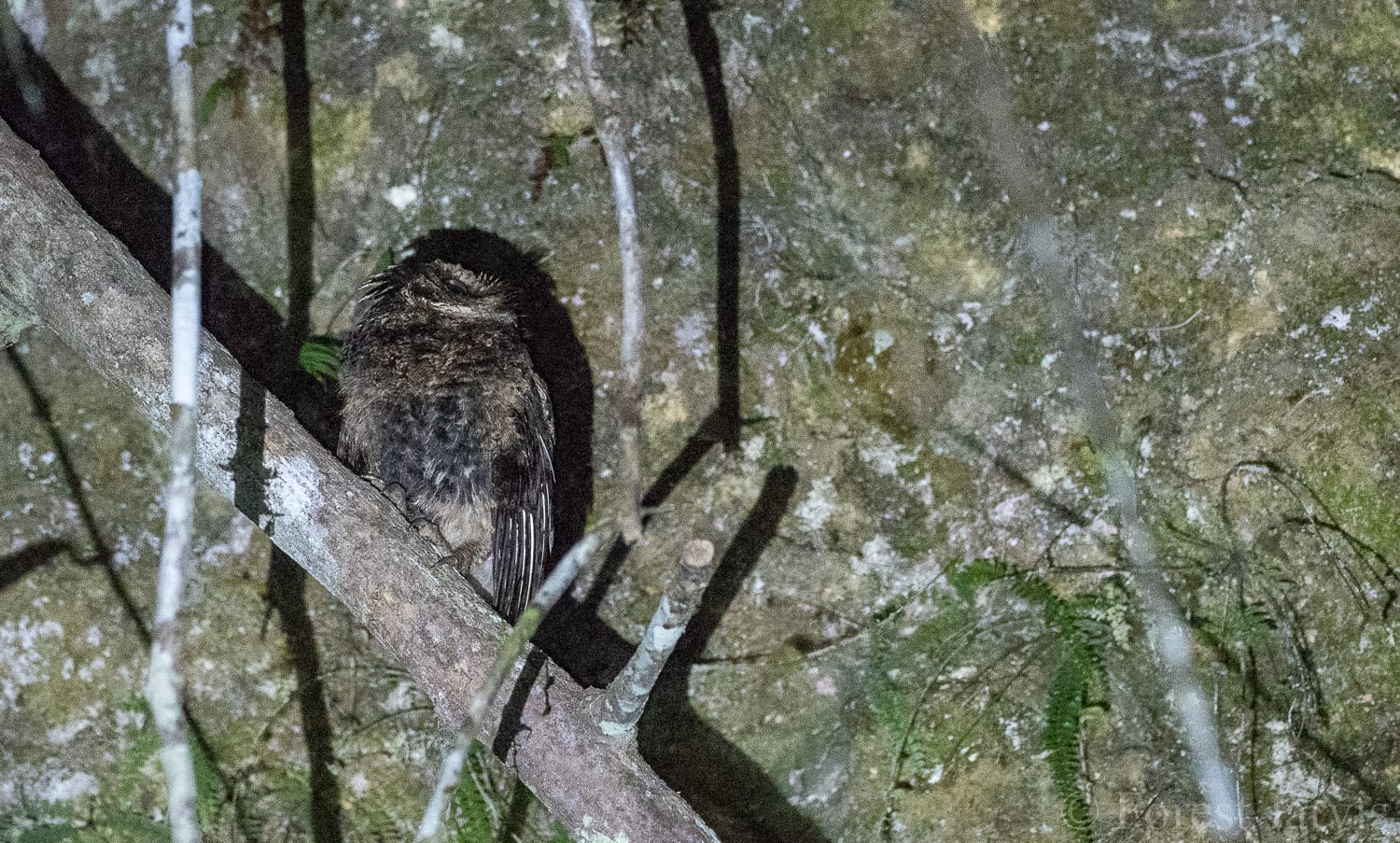
Once the sun had risen, the first section of road gave us a trio of Buff-spotted Flamebacks, a mixed flock of Rusty-crowned Babblers and Mindanao Pygmy Babblers, and a female Metallic-winged Sunbird gathering spiderwebs for a nest. Calling were Rufous Paradise Flycatchers, Mindanao Blue Fantails, White-eared Tailorbird, and the resident Striated Wren-babbler. I was hoping to encounter the Wattled Broadbills and Philippine Trogon I had spotted in the area during my previous visits, but alas, both remained hidden. The Southern Rufous Hornbills, normally quite common and tame, also remained frustratingly distant, giving us only brief flyover views.
It quickly became clear that the usually productive section of road wasn’t quite as productive as usual, so we moved on to a quick breakfast in a small village just downhill, then the next birding area, a section of roadside forest I hadn’t properly explored yet but that looked excellent. As it turned out it would have been a good place to explore first, as it was absolutely bursting with good birds, even as it was getting hot; a Philippine Falconet perched out in the open, while a pair of Naked-faced Spiderhunters gave us brief but good views as they flew past grunting. Some fascinating bird behavior was also observed; we saw a beautiful male Metallic-winged Sunbird feeding from a flower, while above it a Philippine Oriole beat a large caterpillar against a branch to subdue it. Best was an immature Violet Cuckoo being fed by a pair of Buzzing Flowerpeckers a third its size. Joining the same massive mixed flock were four Philippine Pygmy Woodpeckers, Rusty-crowned Babblers, Stripe-headed Rhabdornis, and a Philippine Fairy Bluebird. The latter two species, though relatively easy on Luzon, are quite rare on Mindanao, so it was excellent to observe them at this site.
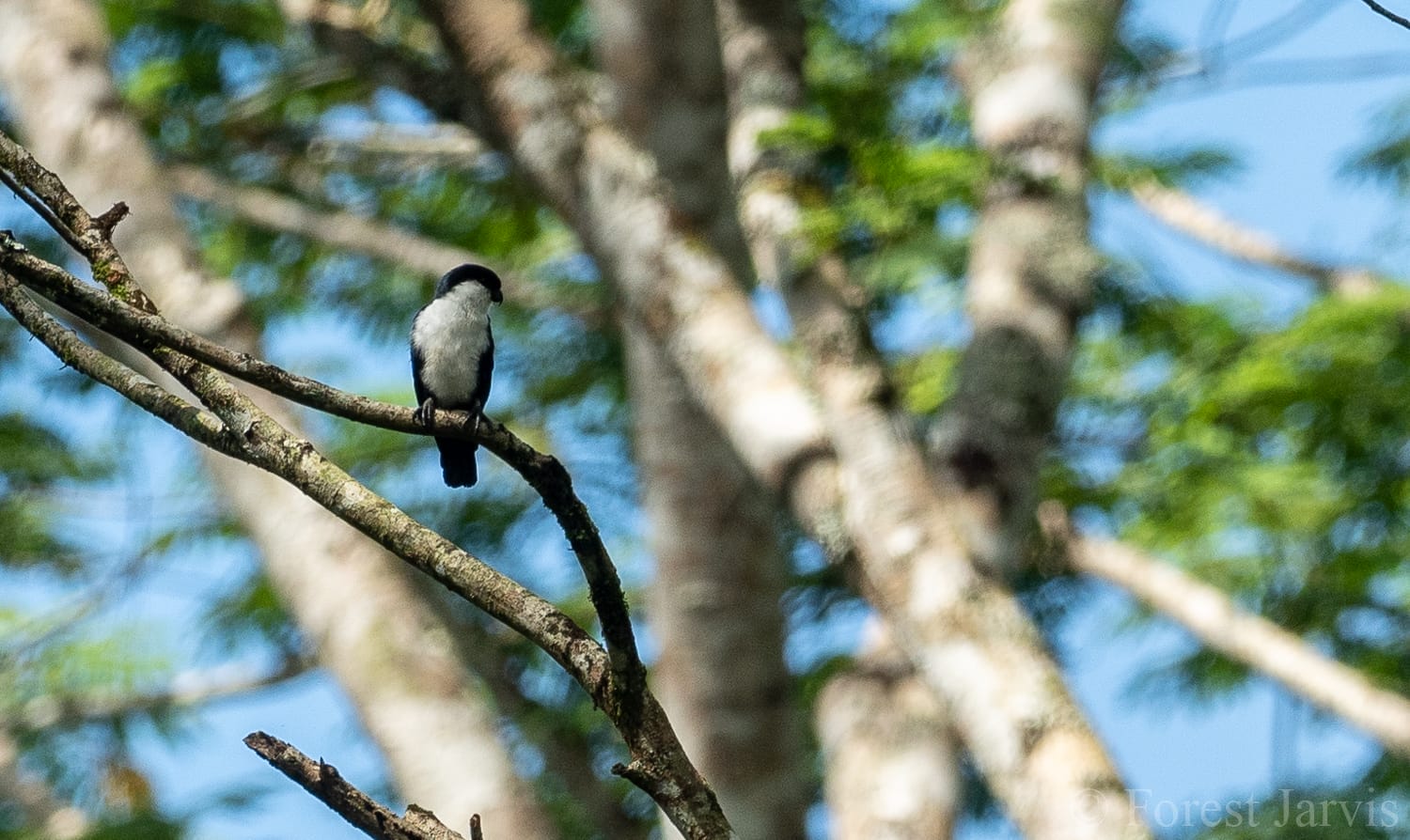
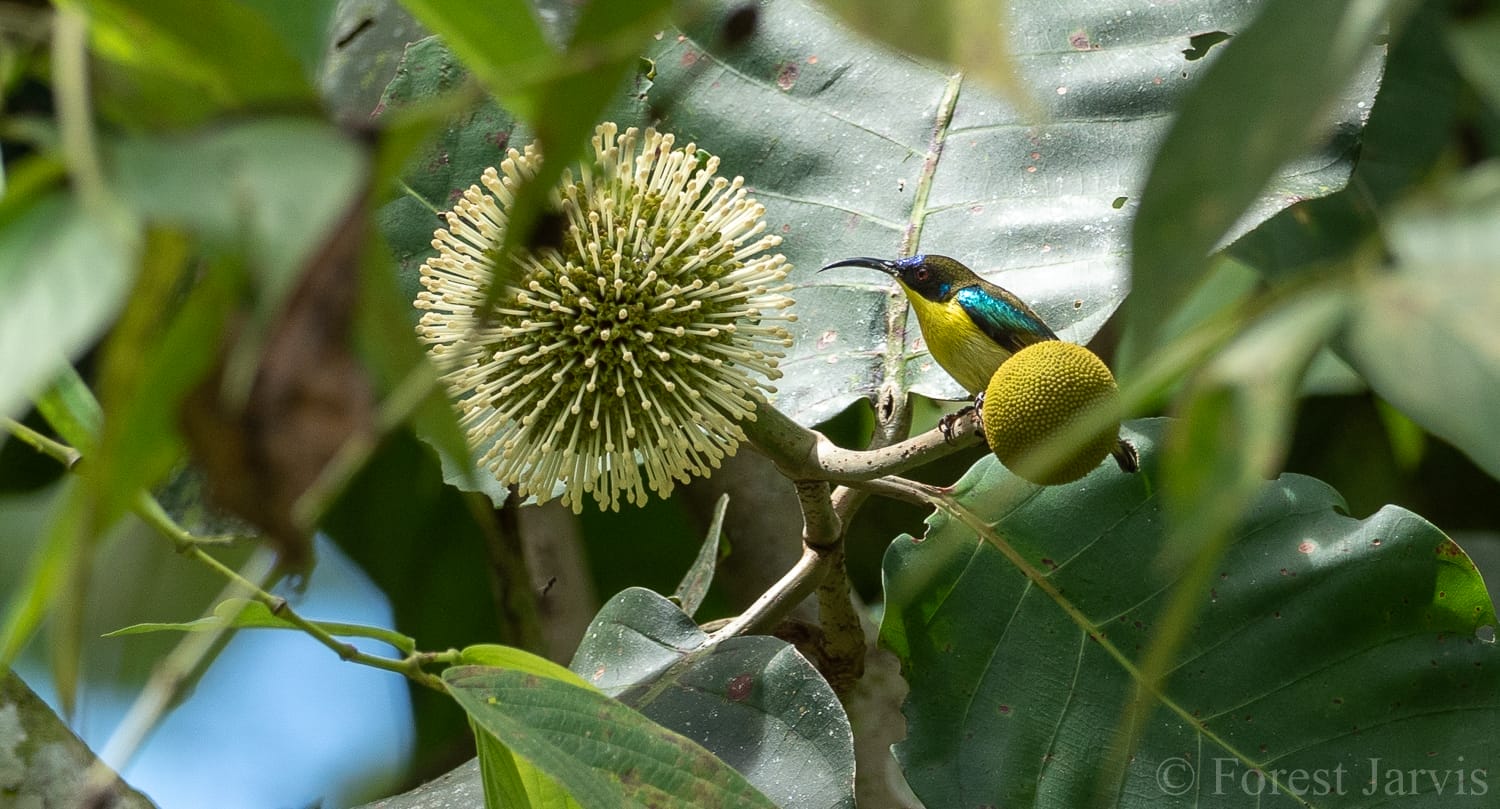
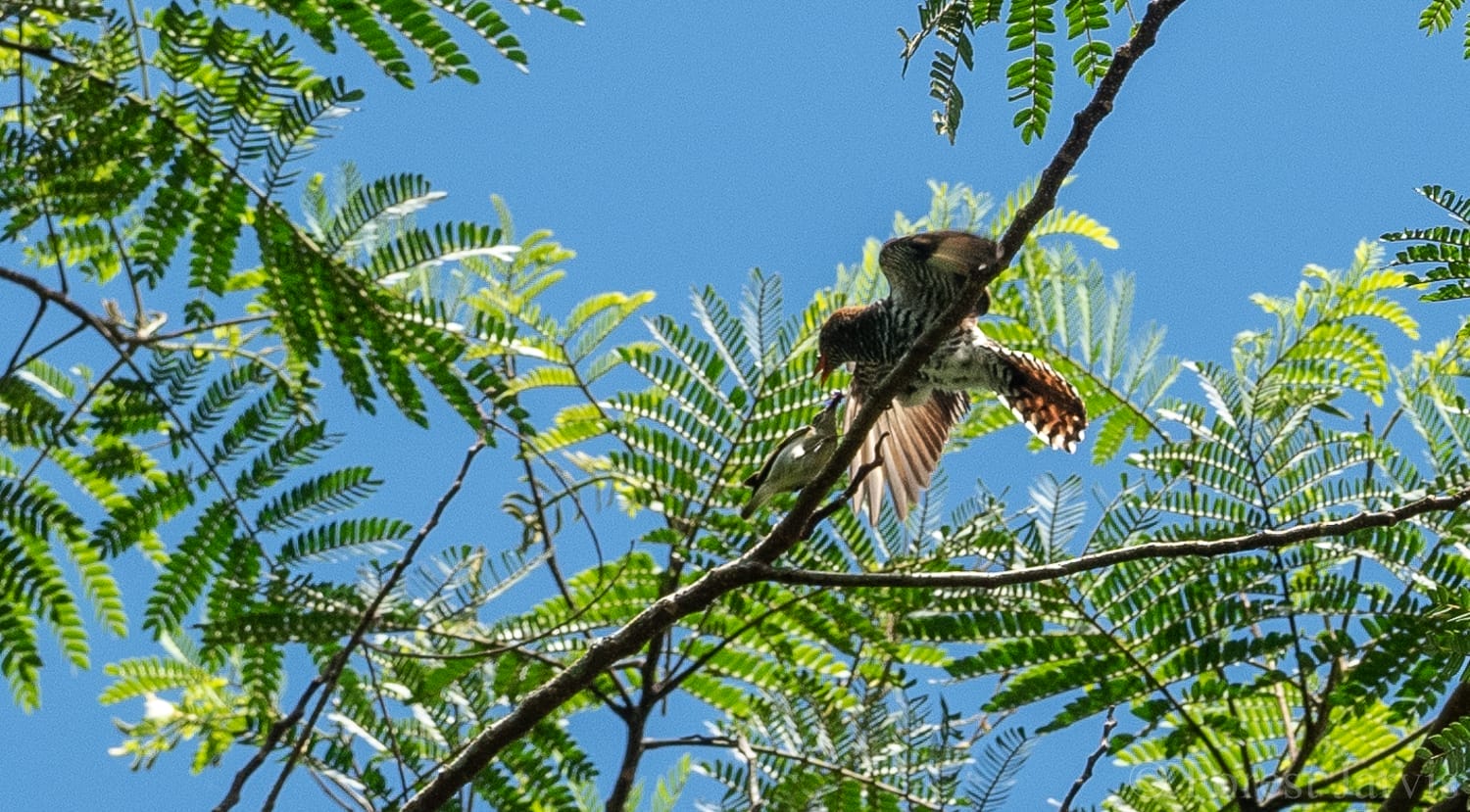
Eventually the forest grew quiet, and we headed back up the road for some lunch and a quick nap, though not before adding Philippine Leaf Warbler and Citrine Canary Flycatcher to our day’s list. Lunch was had in a small settlement in the middle of the forest, and we had a bit to talk to some locals about their roots. Barangay Kuden, like the rest of SNA, is an interesting mix of settlers from the Visayas, Luzon, and other parts of Mindanao, as well as a significant population of indigenous Manobo people. We were rousted from our lunch by a quick but strong earthquake- apparently relatively common in the area, but a shock for us nonetheless!
After lunch, we returned to our original area, hoping for a better look at the local hornbills before we departed. They weren’t immediately apparent, perhaps as the fruiting trees have moved to an area further down the road, but we had enough other birds to keep us busy, including great looks at a feeding group of huge White-bellied Woodpeckers. More fascinating for me was the site of three (yes, three) Mindanao Pygmy Babblers collaborating to build a nest, gathering dry grass from a field and carrying it to a shrub across the road. Very little is known about their nesting behaviors, so it’s quite interesting to note apparent teamwork behavior in nest building- I do wonder if it also happens with feeding chicks and other duties.


Finally, after quite a bit of searching, our driver ended up spotting a pair of Southern Rufous Hornbills sitting in a tree across the valley, quite far away but with excellent views. It was the perfect way to end a very productive day, and a productive trip overall; in just 4 birding days over two sites we saw 118 species of birds, including 76 Philippine endemics and 41 birds endemic to the Philippines. To boot, that included some birds rarely if ever seen on scheduled birding tours of the Philippines. Not too shabby for a tour done at cost. We headed out of the rainforest and back to the city and the airport after that, satisfied with a trip very, very well spent.
